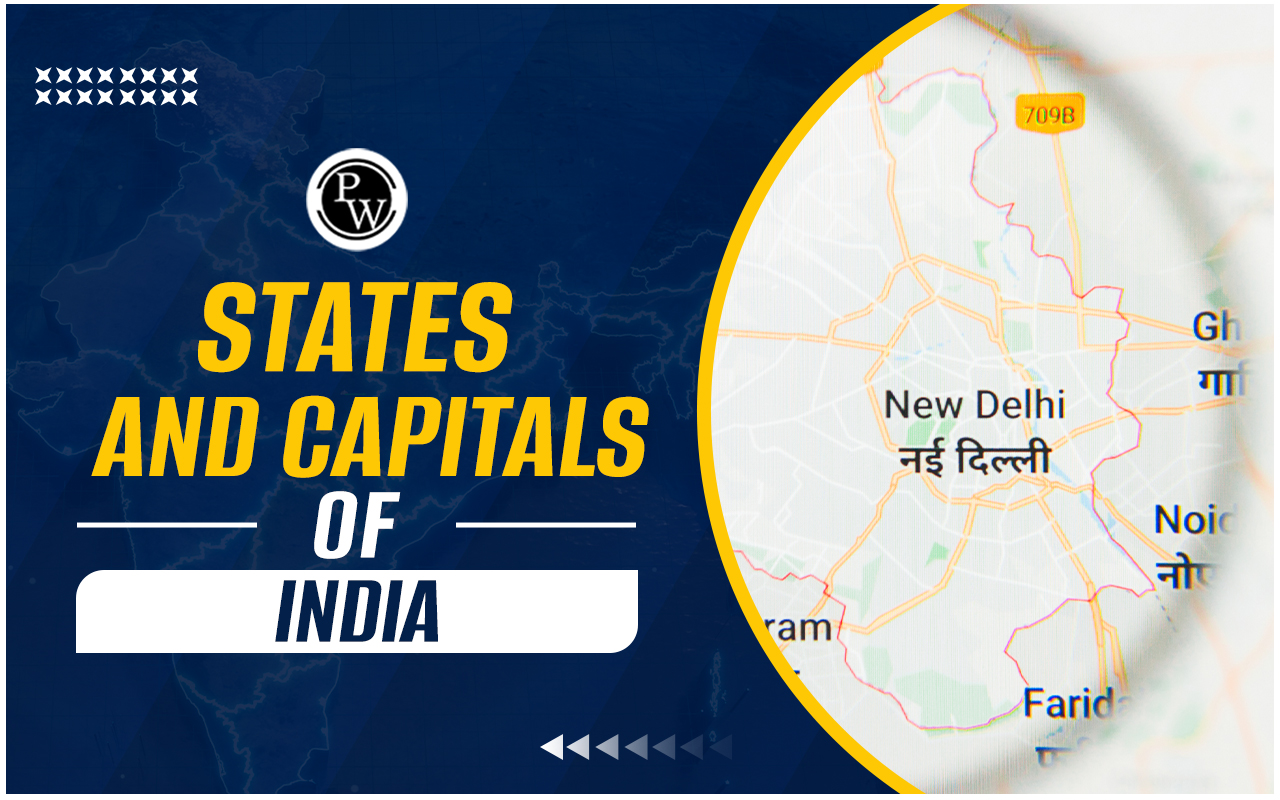
American Civil War
The American Civil War, fought from 1861 to 1865, was a important conflict in United States history. It was primarily between the Northern states (the Union) and the Southern states that seceded to form the Confederate States of America (the Confederacy). The war had impacts on the nation, leading to the abolition of slavery and significant changes in American society.Causes of American Civil War
Causes of the American Civil War are described below:Slavery
Slavery was the central issue leading to the Civil War. The Southern economy relied heavily on agriculture, particularly cotton, which required large numbers of enslaved people for labor. In contrast, the Northern states had largely abolished slavery and were moving towards industrialization.States' Rights
Another key issue was the debate over states' rights versus federal authority. Southern states believed they had the right to govern themselves and make their own laws, including the right to maintain the institution of slavery. The North, on the other hand, supported a stronger central government that could enforce national laws.Economic Differences
The Northern and Southern economies were vastly different. The North was industrializing rapidly, while the South remained agrarian. These economic differences contributed to differing views on tariffs, trade, and other economic policies.Political Conflicts
Political tensions also played a significant role. The election of Abraham Lincoln, a member of the anti-slavery Republican Party, in 1860 was the final trigger for secession. Southern states feared that Lincoln would abolish slavery, threatening their way of life and economic interests.Outbreak of American Civil War
Secession: Following Lincoln’s election, eleven Southern states seceded from the Union and formed the Confederate States of America, with Jefferson Davis as their president. These states argued that they had voluntarily joined the Union and could choose to leave it.
Fort Sumter: The war officially began on April 12, 1861, when Confederate forces attacked Fort Sumter, a Union fort in Charleston, South Carolina. The fort's surrender marked the start of open hostilities between the North and South.
Major Battles and Campaigns of American Civil War
Major Battles and Campaigns of American Civil War are as follows:Battle of Bull Run
The first major battle of the Civil War, the Battle of Bull Run (also known as First Manassas), occurred in July 1861. The Confederacy won this battle, shocking the North and dispelling any illusions that the war would be short.Battle of Antietam
The Battle of Antietam in September 1862 was the bloodiest single-day battle in American history. Although tactically inconclusive, it gave President Lincoln the opportunity to issue the Emancipation Proclamation.Emancipation Proclamation
On January 1, 1863, Lincoln issued the Emancipation Proclamation, which declared all slaves in Confederate-held territory free. This shifted the war’s focus to not just preserving the Union, but also ending slavery.Battle of Gettysburg
The Battle of Gettysburg, fought from July 1-3, 1863, was a turning point in the war. The Union victory ended General Robert E. Lee’s invasion of the North and marked the beginning of the decline of the Confederate forces.Siege of Vicksburg
The Siege of Vicksburg, culminating on July 4, 1863, gave the Union control of the Mississippi River, effectively splitting the Confederacy in two and disrupting their supply lines.Sherman's March to the Sea
In 1864, Union General William Tecumseh Sherman led a devastating campaign through Georgia, known as Sherman’s March to the Sea. His troops destroyed infrastructure and supplies, crippling the Southern war effort.End of the American Civil War
Appomattox Court House
The Civil War effectively ended on April 9, 1865, when General Lee surrendered to General Ulysses S. Grant at Appomattox Court House in Virginia. This marked the collapse of the Confederacy.Assassination of Abraham Lincoln
Just days after the surrender, President Lincoln was assassinated by John Wilkes Booth on April 14, 1865. Lincoln’s death shocked the nation and left the task of reconstruction to his successor, Andrew Johnson.Aftermath of American Civil War
Reconstruction Era
The Reconstruction Era (1865-1877) was a period of rebuilding the South and integrating formerly enslaved people into American society. It involved significant political, social, and economic changes, including the passage of the 13th, 14th, and 15th Amendments, which abolished slavery, granted citizenship, and protected voting rights for African Americans.Economic Impact
The war devastated the Southern economy, which had to transition from a slave-based system to one of free labor. The North, meanwhile, experienced economic growth and industrialization accelerated.Social Changes
The war and Reconstruction brought significant social changes. The end of slavery was a monumental step towards civil rights, though true equality would take much longer to achieve. The period also saw the rise of the Ku Klux Klan and other groups that resisted these changes violently.Political Changes
The federal government emerged from the Civil War with much greater power over the states. The war settled the issue of states’ rights versus federal authority, establishing the precedent that states could not secede from the Union.Legacy of American Civil War
The American Civil War left an enduring legacy. It resolved the fundamental issue of slavery and set the stage for future civil rights movements. It also shaped the nation's identity, reinforcing the idea of a united, indivisible country. The war's memory continues to influence American culture, politics, and society. The American Civil War was a defining event in United States history. It was a conflict born of deep-seated divisions over slavery, states' rights, and economic differences. The war resulted in the abolition of slavery and significant changes in the political, economic, and social landscape of the nation. Its legacy is still felt today, reminding us of the costs of division and the enduring struggle for equality and justice. To succeed in upcoming exams, candidates should consider exploring PW SSC Books We provide high-quality content at an affordable price, including sample papers, mock tests, guidance sessions, and more to ensure aspirants secure their selection. Also, enroll today on SSC Online Coaching to turn your dreams into reality.American Civil War FAQs
What was the American Civil War?
The American Civil War was a conflict fought between the Northern states (Union) and the Southern states (Confederacy) from 1861 to 1865.
What caused the American Civil War?
The main causes were disputes over slavery, states' rights, and economic differences between the North and South.
Who were the main leaders during the Civil War?
Key leaders included President Abraham Lincoln for the Union and President Jefferson Davis for the Confederacy, along with generals like Ulysses S. Grant and Robert E. Lee.
What was the outcome of the Civil War?
The Union won the war, leading to the abolition of slavery and the preservation of the United States as a single nation.
🔥 Trending Blogs
Talk to a counsellorHave doubts? Our support team will be happy to assist you!

Check out these Related Articles
Free Learning Resources
PW Books
Notes (Class 10-12)
PW Study Materials
Notes (Class 6-9)
Ncert Solutions
Govt Exams
Class 6th to 12th Online Courses
Govt Job Exams Courses
UPSC Coaching
Defence Exam Coaching
Gate Exam Coaching
Other Exams
Know about Physics Wallah
Physics Wallah is an Indian edtech platform that provides accessible & comprehensive learning experiences to students from Class 6th to postgraduate level. We also provide extensive NCERT solutions, sample paper, NEET, JEE Mains, BITSAT previous year papers & more such resources to students. Physics Wallah also caters to over 3.5 million registered students and over 78 lakh+ Youtube subscribers with 4.8 rating on its app.
We Stand Out because
We provide students with intensive courses with India’s qualified & experienced faculties & mentors. PW strives to make the learning experience comprehensive and accessible for students of all sections of society. We believe in empowering every single student who couldn't dream of a good career in engineering and medical field earlier.
Our Key Focus Areas
Physics Wallah's main focus is to make the learning experience as economical as possible for all students. With our affordable courses like Lakshya, Udaan and Arjuna and many others, we have been able to provide a platform for lakhs of aspirants. From providing Chemistry, Maths, Physics formula to giving e-books of eminent authors like RD Sharma, RS Aggarwal and Lakhmir Singh, PW focuses on every single student's need for preparation.
What Makes Us Different
Physics Wallah strives to develop a comprehensive pedagogical structure for students, where they get a state-of-the-art learning experience with study material and resources. Apart from catering students preparing for JEE Mains and NEET, PW also provides study material for each state board like Uttar Pradesh, Bihar, and others
Copyright © 2025 Physicswallah Limited All rights reserved.
Get App









